
It's gooey. It's sticky. It's slime! Learn to make your own homemade slime with this quick and easy recipe.
- Subject:
- Chemistry
- Physical Science
- Material Type:
- Activity/Lab
- Date Added:
- 04/14/2024

It's gooey. It's sticky. It's slime! Learn to make your own homemade slime with this quick and easy recipe.
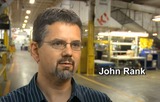
Featuring an interview with John Rank, 2010 NEWMA AllStar from KI in Green Bay(2:51 minutes)
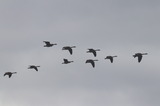
This series of 5 high-quality, standards-aligned, inquiry-based activities and two environmental STEM challenge activities have been field-tested by kindergarten students and families of Wequiock Children's Center for Environmental Science during Safer At Home orders. These activities encourage students to use natural areas around their homes and in their neigbhorhoods as they improve their science observation and reasoning skils as they explore the science of pushes and pulls in nature. The materials used are ones generally available at home and the activites require little preparation on the part of caregivers. Created as a part of a WISELearn OER Innovation project, Connect, Explore, and Engage: Using the Environment as the Context for Science Learning was a collaboration of the Wequiock Children's Center for Environmental Science and the Wisconsin Green Schools Network. One of the goals of the project was to create standards-aligned lessons that utilize the outdoor spaces of the school (as well as those of the students' homes). Each section of this resource is an individual activity. While each activity builds on the previous ones, it is possible to use them individually.The title image was used with permission and is courtesy of Joe Riederer.
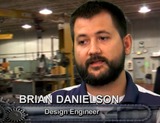
Featuring an interview with Brian Danielson, 2016 NEWMA AllStar from Lindquist in Green Bay (3:30 minutes).

Hear from David Blechl, (Northwestern Mutual); Brooke Schoenherr, (Milwaukee Bucks); and Kat Kuester, (Concurrency). Moderated by Julie Walker (UW-Milwaukee). The following videos will give you a look into the variety of tech jobs and careers available to you and how you can prepare for them. Watch one - or all - and hear from experts who are doing these jobs today. As you watch the videos, download our workbook at https://bit.ly/MKEWorksheet to help you reflect on each career path and if that might be the right one for you some day!

Featuring career information from Dan Stubenvoll, Maintenance Millwright with BPM.
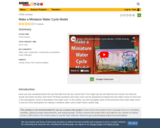
In this fun activity, you will investigate some of the processes that happen in the water cycle-inside a small plastic bag.
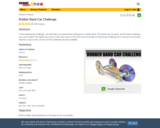
Rubber band-powered cars can be made from a variety of materials, but they all have one thing in common. A rubber band is wound around an axle, a cylindrical rod that passes through the centers of the wheels. As you twist the axle and tighten the rubber band, it stretches and stores elastic potential energy. When you release the axle, the rubber band contracts, and this potential energy is converted to kinetic energy, the energy of motion, and the wheels will spin. Depending on the amount of friction with the ground, the wheels might propel the car forward, or they might just spin in place! The frictional force between the wheels and the ground depends on both the weight of the car and the coefficient of friction, which depends on the materials the wheels and ground are made of. That is a lot of physics in one little device!
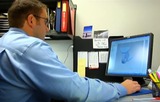
Featuring an interview with Jack Ignatowski, 2008 NEWMA AllStar from Manitowoc Crane (2:29 minutes)

Featuring an interview with Mark Giebel, 2010 NEWMA AllStar from Manitowoc Ice (2:43 minutes)
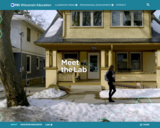
Meet the Lab is a collection of educational resources made for middle school science classrooms. The collection connects learners to relevant real-world issues, cutting-edge research, and the human element: people working together to research, innovate, and solve problems using science. Visit the Educator Resources page at https://pbswisconsineducation.org/meetthelab/educator-resources/ for a guide to each lab, with standards supported, guiding questions, and more.
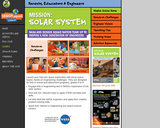
Hands-on, project based learning for Grades 4 to 8. Students use design thinking processes to solve engineering challenges. These space engineering themed lessons will engage students as they apply creative problem-solving skills. Resource includes a full downloadable guidebook. The guidebook includes a description of the design process, 5 design challenges, student handouts, and rubrics. It also includes links to other valuable resources and connection to standards (i.e. Next Generation Science, National Standards).
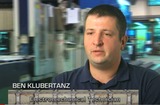
Featuring an interview with Ben Klubertanz, 2013 NEWMA AllStar from Nercon in Oconto (2:59 minutes).

Featuring post-secondary career information from Steve Arant, Environmental Engineering Technologies Instructor at NWTC

Featuring career post-secondary information from Andy Noonen, Prototype and Design Instructor at NWTC.

Meet the Nervous System Engineers—a team of scientists at the Ashton Group who make nervous system tissue to find treatments for nervous system diseases and injuries.
Resources available for learning about this lab include:
• Interactive cards designed to introduce students to scientists in a more personal way
• A video with a personal story that explains why the lab's research matters in real life
• Questions to consider that will spark connection, reflection, and conversation
• An interactive video experience where you can ask questions of scientists in the lab and learn about their research
• An inquiry-based activity that focuses on doing science, using some of the same science practices that the lab uses
• An educator guide with information about standards alignment, curriculum connections, and tips for using the media resources
These resources are part of Meet the Lab, a collection of educational resources for middle school science classrooms.
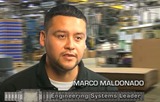
Featuring an interview with Marco Maldonado 2014 NEWMA AllStar from NEW Plastics Corp. in Luxemburg, WI. (3:20 minutes)
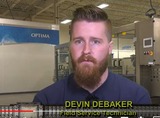
Featuring an interview with Devin DeBaker, 2020 NEWMA AllStar from Optima in Green Bay. (2:26 minutes)
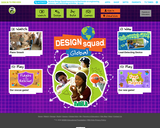
From Site:
NASA and DESIGN SQUAD developed this online workshop for educators and afterschool leaders who want to build their skills and confidence in guiding kids through engineering activities.
Whether you're experienced or new at this, you'll come away with insights and strategies for strengthening your kids' critical-thinking abilities and getting them excited about using the design process, the series of steps engineers use to arrive at solutions.
In this self-guided workshop, you'll:
Experience the design process in action. Learn and reflect on ways you can use the design process to tap into your kids' problem-solving skills and creativity.
Watch an engineering activity. See how easy it is to integrate the design process into the hands-on activities you do with your kids.
Get resources. Discover a variety of engineering activities from NASA and DESIGN SQUAD for kids in grades K–12.

A Great Group / Collaboration Activity to begin teaching the Ideas of Potential and Kinetic Energy.
A stick bomb is a (mechanical) spring-loaded device constructed out of popsicle sticks woven together under a bending moment.